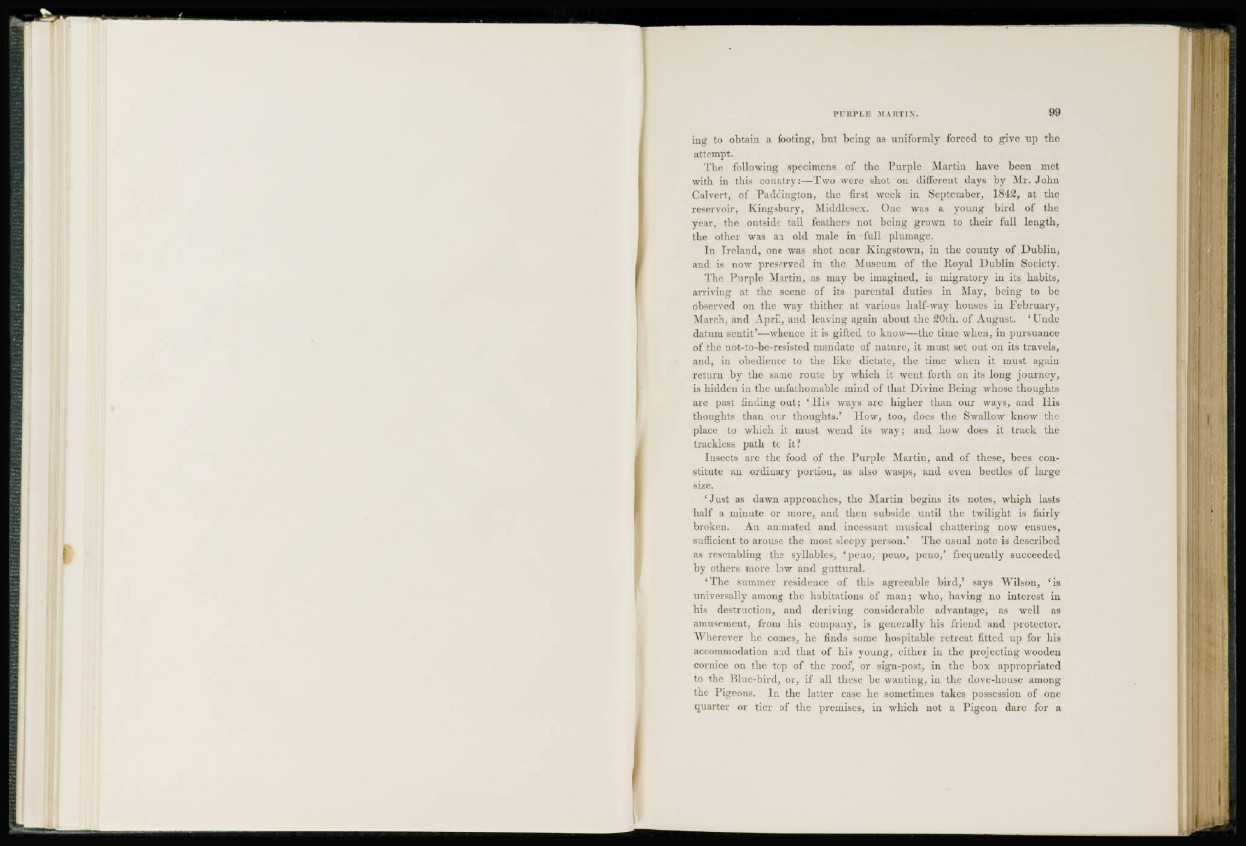
ing to obtain a footing, but being as uniformly forced to give up the
attempt.
The following specimens of the Purple Martin have been met
with hi this country:—Two were shot on different days by Mr. John
Calvert, of Padding ton, the first week Ín September, 1842, at the
reservoir, Kingsbury, Middlesex. One was a young bird of the
year, the outside tail feathers not being grown to their full length,
the other was an old male in full plumage.
In Ireland, one was shot near Kingstown, in the county of Dublin,
and is now preserved in the Museum of the Royal Dublin Society.
The Purple Martin, as may be imagined, is migratory in its habits,
arriving at the scene of its parental duties in May, being to be
observed on the way thither at various half-way houses in February,
March, and April, and leaving again about the 20th. of August. 'Undo
datum scntit'—whence it is gifted to know—the time when, in pursuance
of the not-to-be-resisted mandate of nature, it must set out on its travels,
and, in obedience to the like dictate, the time when it must again
return by the same route by which it went forth on its long journey,
is hidden in the unfathomable mind of that Divine Being whose thoughts
arc past finding out; 'His ways are higher than our ways, and His
thoughts than our thoughts.' How, too, docs the Swallow know the
place to which it must wend its way; and how does it track the
trackless path to it ?
Insects are the food of the Purple Martin, and of these, bees constitute
an ordinary portion, as also wasps, and even beetles of large
size.
'Just as dawn approaches, the Martin begins its notes, whipli lasts
half a minute or more, and then subside until the twilight is fairly
broken. An animated and incessant musical chattering now ensues,
sufficient to arouse the most sleepy person.' The usual note is described
as resembling the syllables, ' peuo, pcuo, peuo,' frequently succeeded
by others more low and guttural.
' The summer residence of this agreeable bird,' says Wilson, ' is
universally among the habitations of man; who, having no interest in
his destruction, and deriving considerable advantage, as well as
amusement, from his company, is generally his friend and protector.
"W herever he comes, he finds some hospitable retreat fitted up for his
accommodation and that of his young, either in the projecting wooden
cornice on the top of the roof, or sign-post, in the box appropriated
to the Blue-bird, or, if all these be wanting, in the dove-house among
the Pigeons. In the latter case he sometimes takes possession of one
quarter or tier of the premises, in which not a Pigeon dare for a